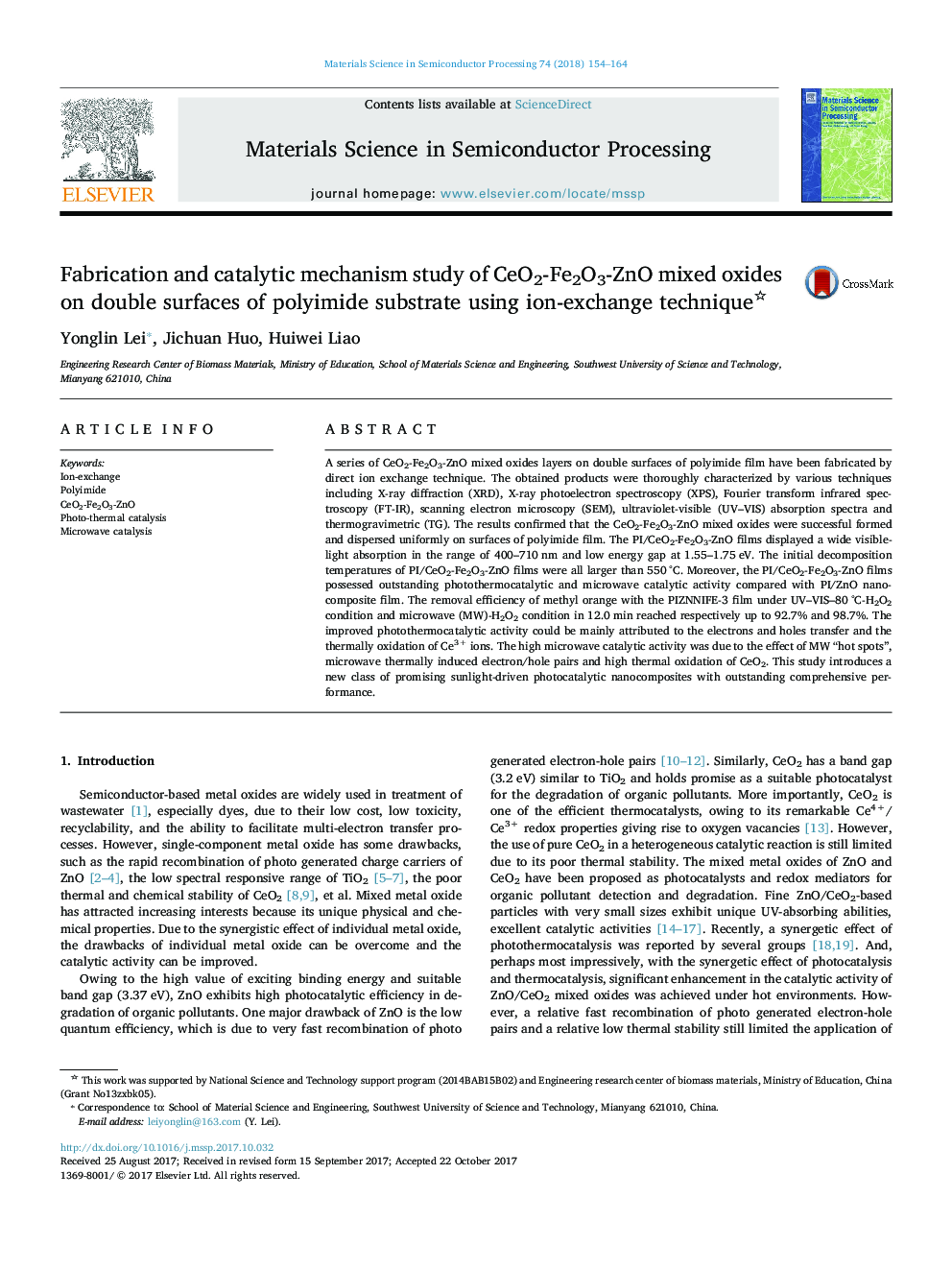| Article ID | Journal | Published Year | Pages | File Type |
|---|---|---|---|---|
| 7118181 | Materials Science in Semiconductor Processing | 2018 | 11 Pages |
Abstract
A series of CeO2-Fe2O3-ZnO mixed oxides layers on double surfaces of polyimide film have been fabricated by direct ion exchange technique. The obtained products were thoroughly characterized by various techniques including X-ray diffraction (XRD), X-ray photoelectron spectroscopy (XPS), Fourier transform infrared spectroscopy (FT-IR), scanning electron microscopy (SEM), ultraviolet-visible (UV-VIS) absorption spectra and thermogravimetric (TG). The results confirmed that the CeO2-Fe2O3-ZnO mixed oxides were successful formed and dispersed uniformly on surfaces of polyimide film. The PI/CeO2-Fe2O3-ZnO films displayed a wide visible-light absorption in the range of 400-710 nm and low energy gap at 1.55-1.75 eV. The initial decomposition temperatures of PI/CeO2-Fe2O3-ZnO films were all larger than 550 °C. Moreover, the PI/CeO2-Fe2O3-ZnO films possessed outstanding photothermocatalytic and microwave catalytic activity compared with PI/ZnO nanocomposite film. The removal efficiency of methyl orange with the PIZNNIFE-3 film under UV-VIS-80 °C-H2O2 condition and microwave (MW)-H2O2 condition in 12.0 min reached respectively up to 92.7% and 98.7%. The improved photothermocatalytic activity could be mainly attributed to the electrons and holes transfer and the thermally oxidation of Ce3+ ions. The high microwave catalytic activity was due to the effect of MW “hot spots”, microwave thermally induced electron/hole pairs and high thermal oxidation of CeO2. This study introduces a new class of promising sunlight-driven photocatalytic nanocomposites with outstanding comprehensive performance.
Related Topics
Physical Sciences and Engineering
Engineering
Electrical and Electronic Engineering
Authors
Yonglin Lei, Jichuan Huo, Huiwei Liao,
